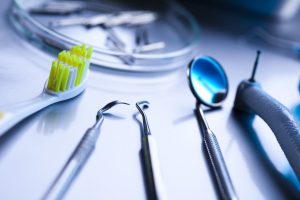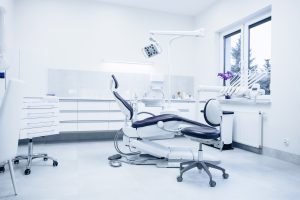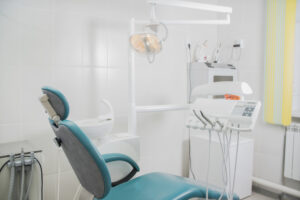The dental attorneys at Nardone Limited in Columbus, Ohio often advise dental clients on partnership formations, including the key legal documents that every partnership should have in place. In our previous article entitled Laying the Legal Foundation for a Successful Dental Practice Partnership, we summarized two of those imperative documents—the partnership agreement and the buy-sell agreement. We then delved deeper into the buy-sell agreement in our article entitled Understanding the Importance of Having a Buy-Sell Agreement between Partners in a Dental Practice, which explains the importance of the buy-sell agreement and identifies some of the “triggering events” that are commonly addressed in the document. As explained, a buy-sell agreement is intended to resolve potential disputes between partners or their families by identifying certain events that will trigger an automatic buy-out or redemption of a partner’s ownership interest, such as death, permanent disability, bankruptcy, or divorce. Equally as important as defining the “triggering events” that will cause an automatic buy-out or redemption, however, is identifying the price at which the doctor’s interest will be purchased or redeemed.
Predetermined Purchase Price
The required buy-out or redemption price is sometimes addressed in the buy-sell agreement as a predetermined price that is agreed to by the partners prior to entering into the agreement. In other words, the partners will agree to the fair market value of each partner’s ownership interest at the outset, either by working with a dental practice advisor to provide a formal written appraisal of the dental practice value, or to provide an informal opinion of the fair market value. Although this is often the easier way to address the purchase price in a buy-sell agreement, it does not account for changes to the dental practice’s production or other factors that may increase or decrease the practice’s value over time. In the event the dental practice’s actual value substantially decreases between the time that the parties establish the purchase price and the event that triggers the buy-out, this could result in a windfall for the selling doctor. Conversely, if the practice’s actual value substantially increases over time, it would result in the selling doctor receiving much less than his ownership interest is worth. Thus, using a predetermined purchase price in a buy-sell agreement is a gamble that has potential to leave at least one doctor unhappy. Rather, the dental attorneys at Nardone Limited often advise their dental clients to include a predetermined formula for calculating the purchase or redemption price at the time of the triggering event.
Predetermined Formulas to Establish Purchase Price
There are endless methods and formulas for valuing a dental practice, and if you ask three different dental advisors, you are likely to receive three different responses. But, most valuation methods will use some variation of a weighted income-based approach.
For instance, some dental advisors or consultants will advise using a weighted percentage of collections approach, where the dental practice’s weighted average of collections over the past three years are multiplied by somewhere between 70{c91082aefe0e580fe546c40af534787b48cfd474f8c9ab8dac50bf49a7a1c43a}-80{c91082aefe0e580fe546c40af534787b48cfd474f8c9ab8dac50bf49a7a1c43a}. While 70{c91082aefe0e580fe546c40af534787b48cfd474f8c9ab8dac50bf49a7a1c43a}-80{c91082aefe0e580fe546c40af534787b48cfd474f8c9ab8dac50bf49a7a1c43a} of a dental practice’s collections is a general “rule of thumb” that is often used in the dental industry, it often does not provide the entire picture. For example, imagine two separate dental practices with collections of $1,000,000. Using 70{c91082aefe0e580fe546c40af534787b48cfd474f8c9ab8dac50bf49a7a1c43a} as the “rule of thumb,” each practice would be valued at $700,000. But, the first practice may have higher overhead expenses and only generate $140,000 in net income, while the other practice may have half the overhead expenses and generate $280,000 in net income. Although the practices are each valued at $1,000,000 using the percentage of collections approach, the second practice appears to be worth more since it generates substantially more net income. As you can see, this is not a perfect methodology.
Other dental advisors or consultants may advise using a weighted average of the dental practice’s earnings before interest taxes depreciation and amortization (EBITDA) for the prior three years, and a common industry multiplier of 1.5. Still others will advise using a hybrid of collections and EBITDA and will also include the practice’s net assets in the equation. Practice valuation is not an exact science, and while there is no right or wrong answer, it is important to consult with your dental advisors, including your dental practice attorney and dental CPA, before deciding on a valuation formula. It is also critical to have your dental advisors run the current numbers using the proposed formula, so that both partners fully understand the current value of their ownership interest using the formula. Making an informed decision on the valuation methodology that works best for your practice will reduce the potential for conflict when a “triggering event” occurs under the buy-sell agreement.
Contact Nardone Limited
The experienced dental attorneys at Nardone Limited routinely prepare buy-sell agreements for partners in a dental practice. If you would like more information regarding buy-sell agreements, contact Nardone Limited.

 Vince Nardone Discusses Employment Contracts with Ohio State Dental Students
Vince Nardone Discusses Employment Contracts with Ohio State Dental Students  Navigating the 2024 Landscape: Strategies and Considerations for Dental Support Organizations (DSOs)
Navigating the 2024 Landscape: Strategies and Considerations for Dental Support Organizations (DSOs)  Sellers of Dental Practices to DSOs need to have a Buyer’s Mentality Requiring Selectivity and a Well-Thought-Out, Decision-Making Process
Sellers of Dental Practices to DSOs need to have a Buyer’s Mentality Requiring Selectivity and a Well-Thought-Out, Decision-Making Process  Increasing Profitability by Minimizing Disruptions within Your Dental Practice
Increasing Profitability by Minimizing Disruptions within Your Dental Practice  As a Dentist, What Are My Obligations Related to Out-of-State Patients and Potential Prescription Drug Abuse?
As a Dentist, What Are My Obligations Related to Out-of-State Patients and Potential Prescription Drug Abuse?